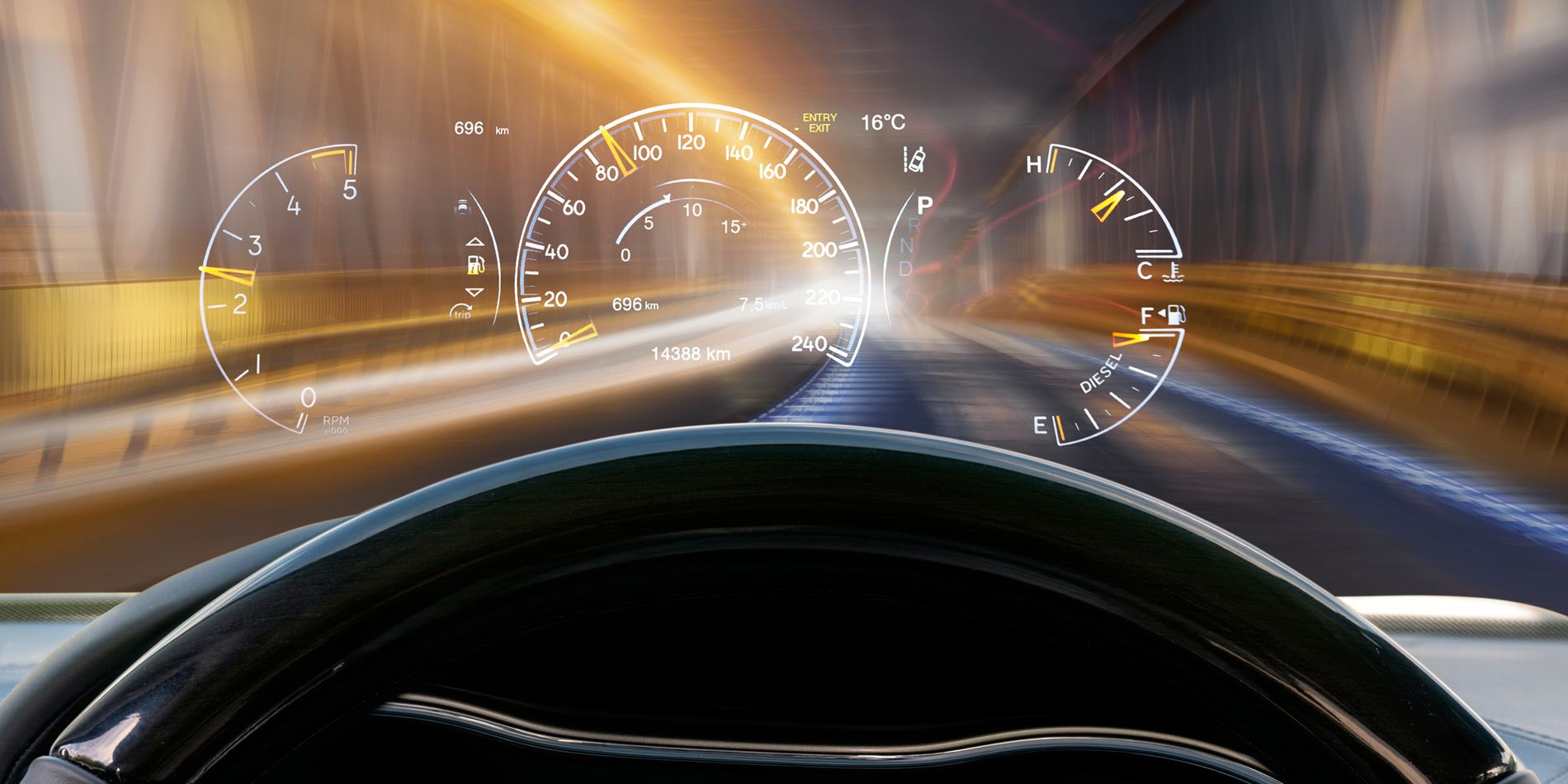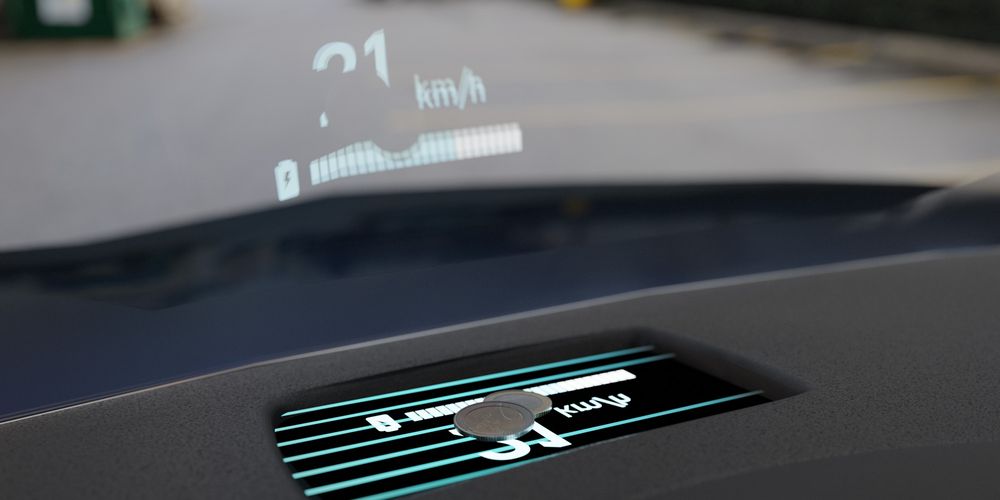Cookie settings

Neonode Provides Crucial Sensor Technology for Head-up Displays
Car makers have grand visions for the next generation of automotive head-up displays (HUD). Neonode’s obstruction detection sensors make sure nothing can get in the way of safe and awe-inspiring HUDs.
Since 1903, when Ford Motor Company “put the world on wheels”, the automotive industry has been making pretty consistent evolutionary progress in improving the driver experience to make it safer and smarter. New features have been introduced along the way such as air conditioning in 1953, seatbelts in 1959, ABS breaks in 1971 and digital dashboards in 1974, but one could argue it took around 100 years for true, revolutionary innovation to happen in the automotive industry.
These days user adoption to technological change is much faster, and therefore we see the race to modernize vehicles accelerating at warp speed. Manufacturers are fighting to come up with the next new feature in order to claim the competitive edge. New models are no longer being released with upgrades or additional add-on options, rather, manufacturers are reshaping the automotive experience with greater connectivity, automation, and electrification. As drivers, we are rewarded with more comfort, convenience, safety and style.
While a lot of the automotive advancements happens under the hood, one very obvious trend we see is the aesthetic design of the car interior.
In an interview in 2018 at the Future of the Automobile conference, Franz von Holzhausen, Tesla’s Senior Design Executive, spoke about the Tesla Model S and the futuristic and stylish design. He said it was “based on the idea of minimalism, that less is more”. He added, “Extra buttons, extra switches are just excess.”
Fast forward to 2022 and competing electric car manufacturer, Polstar, launched their new long-range Polestar 2 electric car and boasted about their minimalistic design with, one could argue, an even more minimalistic super-bowl commercial. The commercial projected the sophisticated simplicity in the car’s design, while playfully touting it's rivals, stating the car will not conquer Mars.
“No Compromises” Big Game Commercial | Polestar
Since then we’ve seen a trend in car manufacturing where buttons, dials and switches are being replaced by touchscreens and gesture controls. Eventually, we can expect even the human driver to be replaced.
But until the day when humans are replaced by a machine, how do car manufacturers plan to modernize one of the most critical instruments in the car, allowing drivers to safely operate a vehicle on our roads – the dashboard?
From Jet Cockpits to Automotive Vehicles
A Head-Up Display (HUD) projects images and information on a car windshield or a panel, just under the driver's eye level. Today, a typical HUD includes a “virtual dasboard”, showing information such as the speedometer, warning signal and navigation instructions.
Originally developed for fighter jets, HUDs are designed to support both better ergonomics and safer driving by eliminating the need to look down at the dashboard or other displays.
In the US alone, 3,142 people were killed in motor vehicle crashes involving distracted drivers in 2020. By displaying information at eye-level, HUDs help drivers keep their attention focused on the road and avoid accidents.
Automakers first began installing HUDs in cars in the late 1980’s, but until recently, these projected dashboards have remained a premium add-on found only in luxury models. Today, more car makers are exploring the possibilities of HUD-only dashboards, so ensuring safety and uninterrupted projections is a key factor.
“For most major automakers, head-up displays are the future of the dashboard,” said Per Nohlert, Director of Business Development, Neonode. “Neonode’s blocking technology ensures drivers recieve an unbreakable HUD projection by detecting if a foreign object is hindering the image projection from the HUD.”
Next Generation Automotive HUDs Require Foreign Obstruction Detection
Today, 30 car makers feature HUDs in around 130 models. That number is projected to grow rapidly in the coming years, with HUDs appearing as a standard feature in more car interiors.
One potential safety issue with HUD technology is that the projection can be blocked by objects on the dashboard, for example, coins, receipts or phone charger cables.
Historically, this has not been much of an issue for the add-on HUDs, because the dash still contains all the traditional physical gauges and alerts. The vision for next-generations HUDs is to remove the physical dials and displays from the dashboard and rely solely on projected head-up displays across the windshield.
As part of that evolution, automakers need to provide a higher level of safety and reliability. That will require foreign object detection and interference detection features to be built into new displays, so important information on the display is always visible to the driver.

Neonode Makes Sure Nothing Gets in the Way of Safe Driving
Neonode optical sensing technologies are used in many applications, including solutions for the highly regulated automotive industry. Since 2013, Neonode’s infrared-based zForce technology has been rolled out in millions of vehicles around the world. Our trusted autmotive HMI solutions include infotainment touch screens, smart steering wheels, as well as driver and in-cabin monitoring systems.
The zForce technology used in our obstruction detection solution consists of a set of light emitters that send short pulses of light across a designated surface, such as the HUD projection module. When any object enters the path of the light the system detects the blocked light and a warning can be sent to the driver immediately. The technology can detect an obstruction as thin and light as a piece of paper, which could provide the sensitivity needed to ensure a safe HUD projection.
It is this proven obstruction detection technology that Neonode automotive customers will integrate into head-up display units.
“Our progressive zForce technology that we have used in global HMI for over 20 years is now being used to provide crucial safety features for head-up displays.” shared Per Nohlert. “Our current talk with Tier 1 auto suppliers will soon result in more superior interface designs due to improved reliability.”
Learn More
Contact us to speak to our expert team about Neonode custom HUD Obstruction Detection solutions or download our free HUD brochure.
Download our free HUD brochure